Pacific Rhododendron Profile
Written by Iris
Aug 06 2021
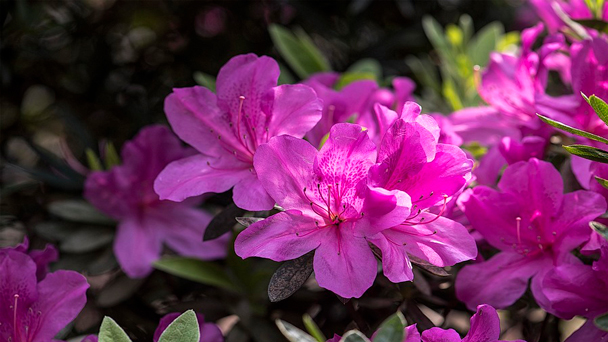
The Pacific Rhododendron is also known as the Coast Rhododendron, California Rhododendron, or California Rosebay. Rhododendron macrophyllum literally means"Rose tree with big leaves." Pacific Rhododendron is the state flower of Washington State.
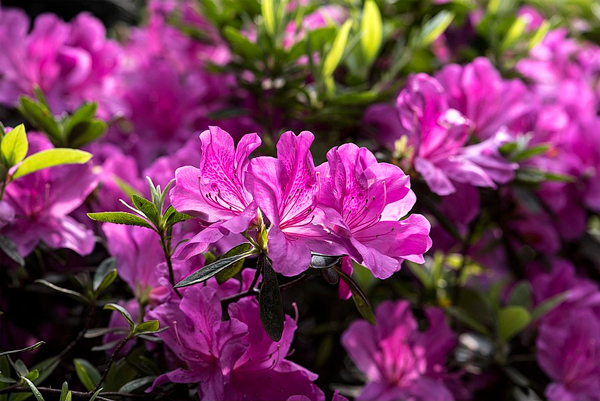
Pacific rhodies bloom between April and July, with plants in lower elevations blooming earlier than those in higher elevations. The flowers have five petals arranged in a bell shape with wavy edges and they grow in clusters of around 15-20 blooms. The color of the blooms can range from white to dark pink though they are typically light pink. They also often have yellow flecks. The leaves are dark green, elliptic to oblong-shaped, and leathery. They range from 3-8 inches in length and 1-3 inches wide. They are evergreens, meaning they do not lose their leaves during the winter. To protect against the cold, leaves can roll themselves up. Leaves are retained for 2-3 years. 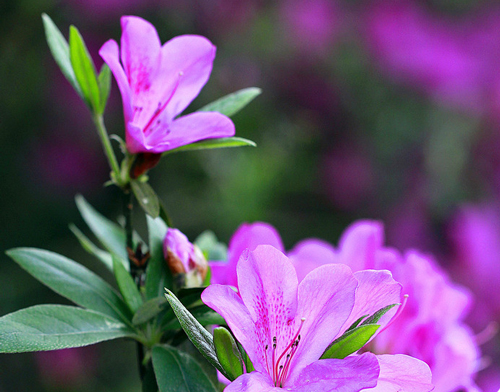
Separate each seedling into its own 4- to 6-inch pot eight to 10 weeks after they have hardened off and are not tender. Keep them evenly moist but not waterlogged. Dilute rhododendron fertilizer by half and add it to the seedlings' water once a month. Transplant them outdoors when they are at least 15 inches tall.
Steps for Pacific Rhododendron (Rhododendron macrophyllum) Propagation with Stem Cuttings
Clean a sharp pair of trimmers or scissors, then snip off a stem at the softer woody part of the stem. After this, dip the wounded end of the cutting into rooting hormone, and place in moist soil.
About 15cm from the shoot tip, make a nick using a sharp knife on the underside of the branch – aim to cut just halfway through the stem. Dust the area with hormone rooting powder and lay the shoot down on the ground.
Dig a shallow hole at the point where the stem touches the ground and peg it down firmly to stop it springing up. Cover the stem at this point with compost.
Weight the buried shoot down with a heavy stone and water regularly to keep the area moist. By autumn the layer will have rooted. Cut if off from the parent plant and replant.
Temperature and Humidity
Pacific rhododendrons naturally likes more humid, moderate temperatures. It is quite cold-hardy, and doesn’t mind freezing temperatures, which is clear from the fact that its hardy to USDA zone 4. 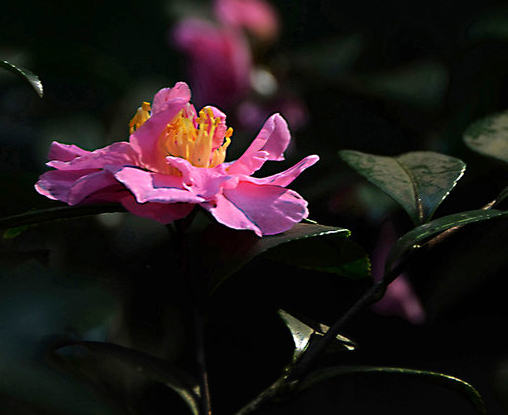
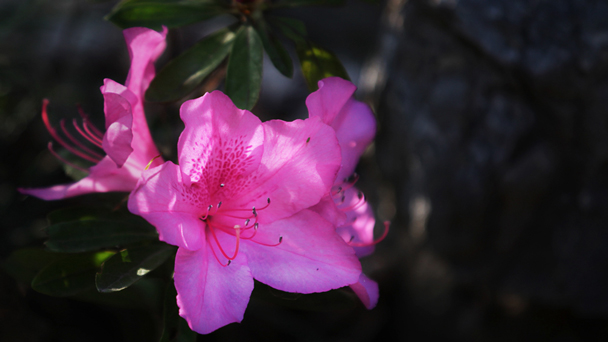
Insects. Oblique-banded leaf rollers feed on and web new growth in the spring and early summer.
Root weevils cause considerable trouble to many ornamentals. The adults cause minor damage to the tops by notching the leaves, producing a scalloped effect along the leaf margins. This damage is negligible compared to that done by the larval form to the root system. Young roots are destroyed, and often the stem is girdled, leading to death of the plant.
Spider mites often web leaves and cause them to become yellow and dry. Heavy infestations may cause defoliation.
Aphids are troublesome on all ornamentals, particularly rhododendrons, where new growth may be distorted by their feeding.
Diseases. Disease problems include leaf spot, rust, leaf gall, and root rot. In all cases, proper identification is necessary before effective control measures can be recommended.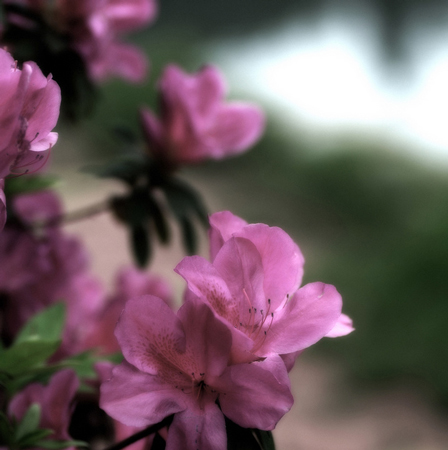
Choose plants with staggered bloom times to guarantee a few months or more of splendid color.
Rhododendrons and azaleas make wonderful companions to other acid-loving plants and trees, such as ferns and flowering dogwoods.
Many bulbs, like tulips, daffodils, and lily-of-the-valley, will bloom around the same time, without competing for water, nutrients, or space.
Pacific Rhododendron (Rhododendron macrophyllum) PicturePacific Rhododendron (Rhododendron macrophyllum) InfoEcological Habits of Pacific Rhododendron (Rhododendron macrophyllum)Pacific Rhododendron (Rhododendron macrophyllum) Distribution AreaHow to Grow and Care for Pacific Rhododendron (Rhododendron macrophyllum)Uses of Pacific Rhododendron (Rhododendron macrophyllum)Pacific Rhododendron (Rhododendron macrophyllum) Common Pests/DiseasesPacific Rhododendron (Rhododendron macrophyllum) Design Tips
Pacific Rhododendron (Rhododendron macrophyllum) Picture

Pacific Rhododendron (Rhododendron macrophyllum) Info
| Botanical Name | Rhododendron macrophyllum |
| Common Name | Pacific rhododendron |
| Plant Type | Perennial |
| Mature Size | 12 to 25 feet high |
| Sun Exposure | Full sun to partial shade |
| Soil Type | Low nutrient; well-drained |
| Soil pH | Acidic |
| Bloom Time | Spring and summer |
Ecological Habits of Pacific Rhododendron (Rhododendron macrophyllum)
Pacific rhododendrons prefer well-draining, acidic soil with a low nitrogen content. In the wild, they grow as understudy plants in conifer forests alongside Western hemlock, Sitka spruce, Ponderosa pine, and Douglas fir. They can also thrive in disturbed areas such as roadsides, where they can help prevent erosion.Pacific rhodies bloom between April and July, with plants in lower elevations blooming earlier than those in higher elevations. The flowers have five petals arranged in a bell shape with wavy edges and they grow in clusters of around 15-20 blooms. The color of the blooms can range from white to dark pink though they are typically light pink. They also often have yellow flecks. The leaves are dark green, elliptic to oblong-shaped, and leathery. They range from 3-8 inches in length and 1-3 inches wide. They are evergreens, meaning they do not lose their leaves during the winter. To protect against the cold, leaves can roll themselves up. Leaves are retained for 2-3 years.
Pacific Rhododendron (Rhododendron macrophyllum) Distribution Area
Pacific Rhododendron, Coast Rhododendron or Big Leaf Rhododendron is a broadleaf evergreen Rhododendron species native to western North America. pacific rhododendron is found along the Pacific Coast from British Columbia to Monterey County in California. It is widely distributed in the Coast and Cascade Mountain Ranges. Pacific rhododendron is less abundant in the Coastal Mountains of Washington and northern Oregon and more common south of the Siuslaw River.
How to Grow and Care for Pacific Rhododendron (Rhododendron macrophyllum)
How to Grow Pacific Rhododendron (Rhododendron macrophyllum)
Propagating your pacific rhododendron is easy and can be done with cuttings, seeds or layers.- With Seeds
Separate each seedling into its own 4- to 6-inch pot eight to 10 weeks after they have hardened off and are not tender. Keep them evenly moist but not waterlogged. Dilute rhododendron fertilizer by half and add it to the seedlings' water once a month. Transplant them outdoors when they are at least 15 inches tall.
Steps for Pacific Rhododendron (Rhododendron macrophyllum) Propagation with Stem Cuttings
Clean a sharp pair of trimmers or scissors, then snip off a stem at the softer woody part of the stem. After this, dip the wounded end of the cutting into rooting hormone, and place in moist soil.
- With Layers
About 15cm from the shoot tip, make a nick using a sharp knife on the underside of the branch – aim to cut just halfway through the stem. Dust the area with hormone rooting powder and lay the shoot down on the ground.
Dig a shallow hole at the point where the stem touches the ground and peg it down firmly to stop it springing up. Cover the stem at this point with compost.
Weight the buried shoot down with a heavy stone and water regularly to keep the area moist. By autumn the layer will have rooted. Cut if off from the parent plant and replant.
How to Care for Pacific Rhododendron (Rhododendron macrophyllum)
- Light
- Soil
- Water
Temperature and Humidity
Pacific rhododendrons naturally likes more humid, moderate temperatures. It is quite cold-hardy, and doesn’t mind freezing temperatures, which is clear from the fact that its hardy to USDA zone 4.
- Fertilizer
- Pruning

Uses of Pacific Rhododendron (Rhododendron macrophyllum)
Use by people
Pacific Rhododendrons are of little use to people, except as an ornamental shrub. Flowers were used by natives as decoration, especially for dance wreaths.Use by wildlife
This shrub provides all year cover for wildlife but has very little food value. Deer and Mountain Beavers are among the few that browse on Pacific Rhododendron.Landscape Uses
The spectacular display of Spring flowers and attractive evergreen leaves make Rhododendrons popular, versatile shrubs that offer multiple seasons of interest. They are excellent for use in shrub borders, foundation plantings and with smaller varieties, rock gardens. Rhododendrons truly shine when planted in groups or in woodland areas that offer filtered shade. Excellent companions for Rhododendrons include spring blooming bulbs, hellebores, hostas, bleeding Hearts, pieris, heathers and japanese maples.
Pacific Rhododendron (Rhododendron macrophyllum) Common Pests/Diseases
Pacific rhododendrons are injured by various types of insects and diseases. Look for the characteristic symptoms of the problem and treat plants promptly with appropriate cultural, biological, mechanical, or chemical methods. Various nutrient disorders will be reflected in foliar symptoms unique for the mineral element deficiency or interaction (Table 1). In any case, it's best to check with local gardening experts for controls and problem prevention.Insects. Oblique-banded leaf rollers feed on and web new growth in the spring and early summer.
Root weevils cause considerable trouble to many ornamentals. The adults cause minor damage to the tops by notching the leaves, producing a scalloped effect along the leaf margins. This damage is negligible compared to that done by the larval form to the root system. Young roots are destroyed, and often the stem is girdled, leading to death of the plant.
Spider mites often web leaves and cause them to become yellow and dry. Heavy infestations may cause defoliation.
Aphids are troublesome on all ornamentals, particularly rhododendrons, where new growth may be distorted by their feeding.
Diseases. Disease problems include leaf spot, rust, leaf gall, and root rot. In all cases, proper identification is necessary before effective control measures can be recommended.

Pacific Rhododendron (Rhododendron macrophyllum) Design Tips
Here are a few tips for incorporating them into your garden:Choose plants with staggered bloom times to guarantee a few months or more of splendid color.
Rhododendrons and azaleas make wonderful companions to other acid-loving plants and trees, such as ferns and flowering dogwoods.
Many bulbs, like tulips, daffodils, and lily-of-the-valley, will bloom around the same time, without competing for water, nutrients, or space.
Pacific Rhododendron (Rhododendron macrophyllum) Companion Plants
Rhododendrons thrive in more informal woodland-style gardens where they can be boosted with underplanting. Try woodland perennials such as hostas, pulmonaria, erithonium, ferns and hellebores. Another option is to combine them with woodland favourites like acers, cornus and deciduous camellia (Stewartia).
Latest Updated
- Benefits of Bugleweed - 7 Science-backed Health Benefits
- Bugleweed Dangers & Side Effects - Is It Poisonous?
- How to Plant Evergreen Trees - What You Should Know
- When to Plant Evergreens - Grow Guide for Evergreen Trees
- 12 Wonderful Evergreen Shrubs for Your Garden
- 12 Popular Evergreen Plants with Pictures for Beginners
- When And How To Prune A Lilac Bush Like a Pro
- How to Grow & Care for Lilac Vine (Hardenbergia Violacea)
- Japanese Lilac Tree (Syringa Reticulata) Care & Propagation Guide
- Shumard Oak Pros and Cons - What to Know
Popular Articles
- Winter maintenance of Antirrhinum Majus
- How to Grow Terminalia Mantaly Tree
- How to Grow and Care for Crossostephium Chinense
- How to grow Antirrhinum Majus in spring
- Peristeria Elata (Dove Orchid) Profile: Info & Care Guide
- Underwatered Snake Plant (Sansevieria Trifasciata) - Signs And How To Fix
- How to Care for Brazilian Jasmine Plant (Mandevilla Sanderi)
- How to Grow & Care for Graptopetalum Purple Delight in Summer
- Rosa Chinensis (China Rose): Plant Growing & Care Tips
- How to Care for Baby Sun Rose (Aptenia Cordifolia)